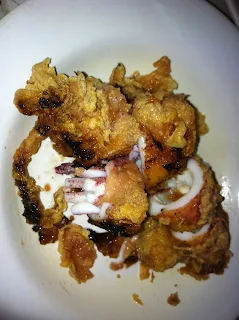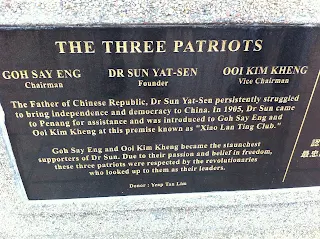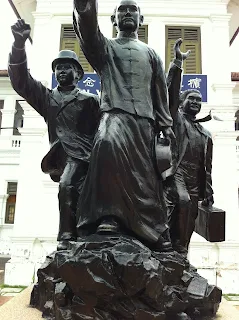Steamed egg squares, topped up by finely cut spring onions or chives, remind me of childhood meals - I still look forward to them, with a custard-like silken smooth surface. I anticipate the bite into one of such warm slices, or the texture when consumed with steamed jasmine rice. It gives a light and appetising sensation and is not too difficult to prepare, even when rushed at dinnertime after coming home from work on a weekday evening. You can also add small bits of cut shitake mushrooms, ham, prawns or minced pork. Place the mixture preferably in a round dish to steam and garnish with sesame oil for taste.

A classic soup (above) with the positive nutrients of red dates, peanuts and chicken feet on the bone slow simmered in rich stock. Flavourful, enhancing and aromatic. Do not try to focus on the chicken feet, they are there for a purpose to add to the richness of the dish and there is no need to eat them. Interesting enough, chicken feet are also utilised as food in Mexico, Trinadad and Jamaica. They are also referred to as phoenix claws or feng jiao in Mandarin. In the kitchen preparation, cooks do remove the outer yellow layer of such chicken feet before proceeding to utilise them. Cloves of garlic and dried mushroom slices are also put in the soup shown above.
The ultimate quality of stir-fried vegetables depends on their cut, stir-frying techniques and accompaniment of carefully selected companions in the recipe - be they carrots or garnishings like dried shrimp, garlic and more.
Fish cutlets resting in a heady mix of soy sauced based gravy, garnished with chili cut slices,
deep fried shrimp and spring onions. Best served with steamed rice, this dish serves as an everyday alternative to seafood in batter or grilled, and reflects as one of several dishes found at the lunch or dinner table in a Penang Chinese home.















































